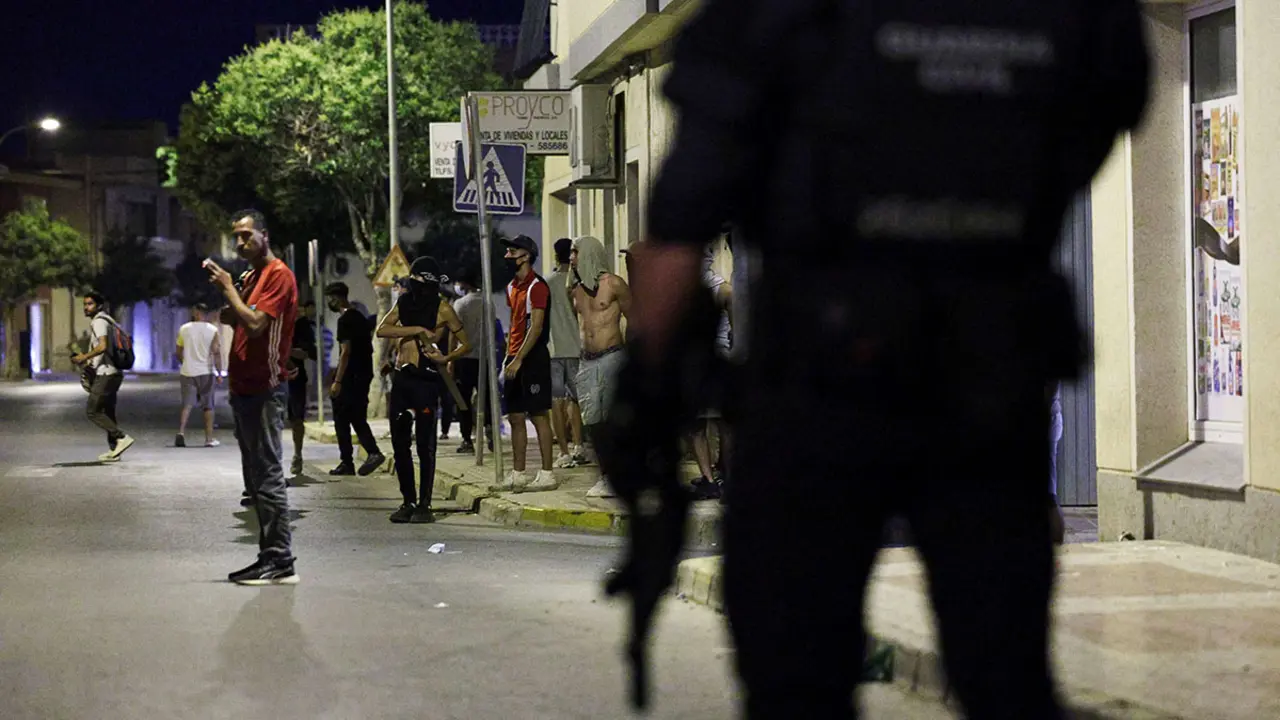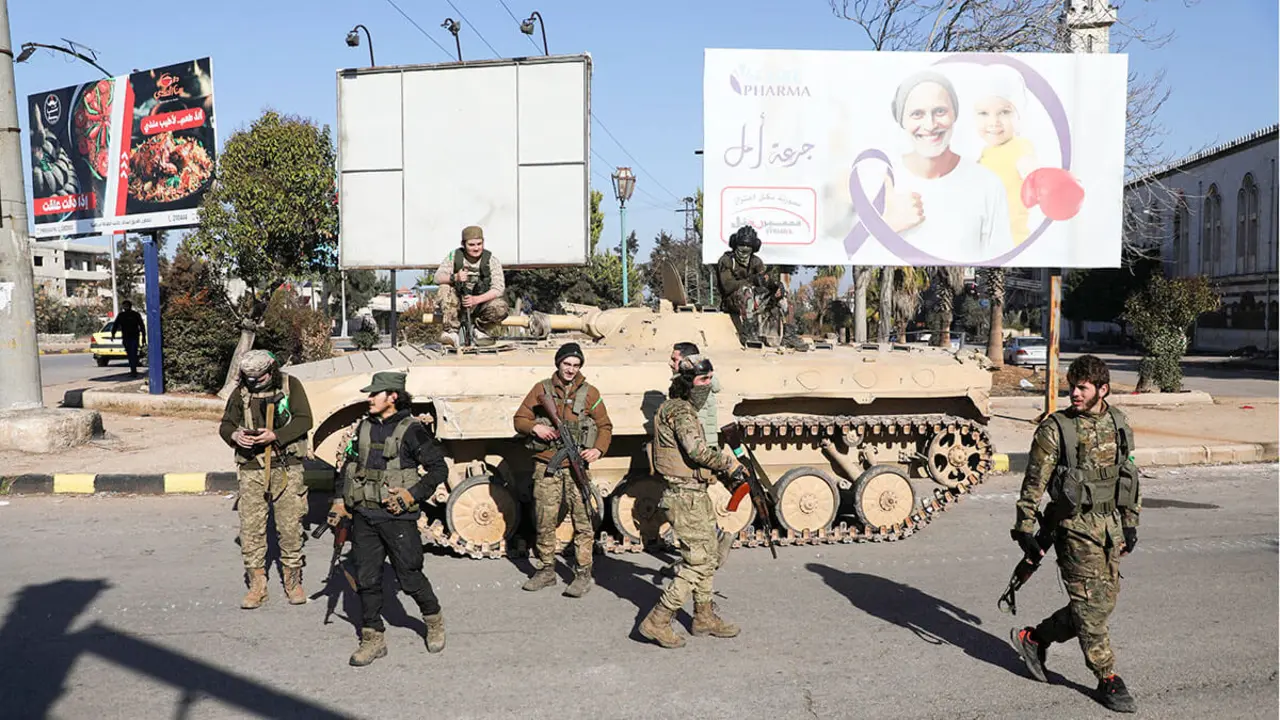Tragedy in Iran: dozens of schoolgirls taken to hospital after suspected poisoning

The crisis in Iran that erupted in September 2022 seems to have no end in sight. Since the death of Mahsa Amini, the Iranian regime, led by Ali Khamenei, has perpetrated continuous attacks against its own citizens that have led many of them to prison, exile and some to the gallows. The wounded number in the thousands and the dead in the hundreds. This time the hypothetical crime suffered by the Iranian population, more specifically women, is the poisoning of dozens of students in an educational centre located east of the capital, Tehran, in the city of Qom. Dozens of schoolgirls in Iran were admitted to hospital on Tuesday after a mysterious poisoning, an Iranian news agency reported, in what is the latest in a series of alleged attacks.
The attack comes as no surprise. Since last November, more than 650 women have suffered such attacks. The symptoms are clear: shortness of breath and general malaise that made them feel unwell. The students who suffered from the poisoning required hospital treatment. According to government officials, the attack was believed to be a deliberate and forced attempt to close the girls' schools, and the Iranian government has disassociated itself from the acts. "Today at noon, several female students were poisoned at the Khayyam girls' school in the city of Pardis, Tehran province," Tasnim news agency reported on Tuesday.

The agency said 35 students had been taken to hospital so far, adding to hundreds of poisoning cases in at least two other cities, including Qom. The poisonings come more than five months after protests spread across Iran over the death in custody of Mahsa Amini, 22, following her arrest for an alleged violation of the country's strict dress code for women. On Sunday, students at a girls' school in Borujerd were rushed to hospital after a similar incident, the fourth in the western city in the past week.
Iran's parliament held a meeting on Tuesday to discuss the alleged attacks in the presence of Health Minister Bahram Eynollahi, the official IRNA news agency reported. The agency further quoted parliamentary speaker Mohamed Bagher Ghaliabf as saying that both Qom and Borujerd were "dealing with poisonings of students". On Sunday, Iran's deputy Health Minister Younes Panahi said some people had been poisoned at a girls' school in Qom with the aim of shutting down education for girls. Activists have compared those responsible for the alleged attacks to the Taliban in Afghanistan and Boko Haram in the Sahel, who oppose girls' education.

The suspects used commercially available "chemical compounds", the ministry said, ruling out substances "for military use". The cases have sparked a wave of indignation among parents' groups across the country, as the authorities remain silent about the growing number of those affected. The head of the National Police, Ahmadreza Radan, announced on Tuesday that the security forces were in the process of identifying possible suspects. So far, however, no arrests have been made in connection with the poisonings. "All state services are trying to address the fears of the population," he added, according to Iran's Tasnim news agency. While the conditions and rights of women in Iran are in question, education is compulsory for all.
According to data from the Ministry of Education, there are more women in school than men, a gap that widens in universities. Former vice-president Masumeh Ebetkar (reformist) on Tuesday urged the regime to "put an end once and for all to misogynist fanatics". A Shiite dignitary, Ayatollah Javad Aalvi-Boroujerdi, deplored the "discordant statements of the authorities" about the origin of the case. "One official mentions intentional poisoning, while another blames faults in the heating system. These contradictions reinforce people's mistrust of the state," he said, according to Shafaqna news agency.

Meanwhile, public frustration continues to grow. The first poisoning occurred on 30 November. This time 18 pupils were affected at the Nour Technical School in the town of Qom. Since then, more than ten schools have been the target of harassment around the province where the country's capital is located. According to reports this past week, at least 194 girls were poisoned in four different schools in the city of Borujerd in the western province of Lorestan. All of them agreed that there was a strong smell of rotten fish in the air before they fell ill.
If the statements of the affected women are true, we could be talking about a poison whose main component is hydrogen phosphide, commonly known as 'phosphine'. The gaseous form of this element, which is cheap, easy to obtain, easy to apply and easy to manufacture, is highly toxic. This is only a hypothesis, but if it is corroborated, we would be looking at an attack that was not intended to kill the students, but to send a message to the female collective of the country, since the toxicity of phosphine is lethal in a very small dose, so the attack was prepared by agents who knew perfectly well the use of this element.

The Alcalá de Guadaira case (with similar characteristics to those suffered by the women in Iran) was reported by the Spanish toxicologist Manuel Repetto Jiménez, doctor in Medicine and Surgery, who worked as a doctor at the National Institute of Toxicology and Forensic Sciences in Seville between 1990-2010: "Firstly, because of the clinical symptomatology, which is initially similar to a food poisoning with vomiting, diarrhoea and dizziness, but which becomes very specific for this compound with halitosis with the smell of rotten fish, a drop in blood pressure, cardiac and pulmonary alterations and loss of vision and hearing." He added: "Phosphine is a lethal gas in very small doses and once it has triggered the onset of the toxic effect it blocks cell respiration and is eliminated from the body through respiration until death occurs".

Others speculate that the poisonings are the work of hardline activists who want to "copy" the Taliban model in Afghanistan and the militia Islamic group Boko Haram in Nigeria, terrorising parents to stop sending their daughters to school. "Has Boko Haram arrived in Iran?" asked former vice president Mohammad Ali Abtahi on Instagram. The reformist politician also warned that "extremists will interpret the boundaries of government and religion in their favour". Iran's leaders have traditionally dismissed criticism of restrictions on women, such as compulsory veiling, and have instead boasted about the number of women attending university. But if young girls do not finish school, university is just a dream.
Comments from one girl - who says she has been poisoned twice - during a meeting with the Qom governor earlier this month highlighted how vague and misleading some of the authorities' statements have been. "They [officials] tell us: 'Everything is fine, we have done our investigations'. But when my father inquired at my school, they told him: 'Excuse me, the CCTV has been damaged for a week and we can't investigate this'," he said.








